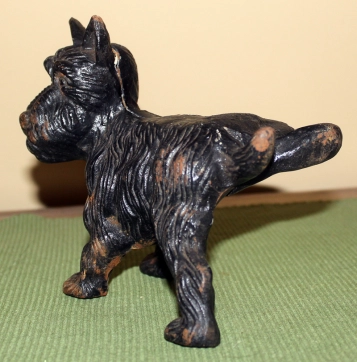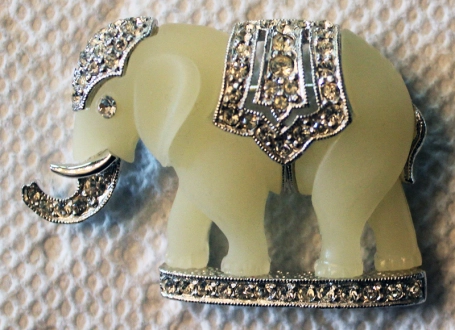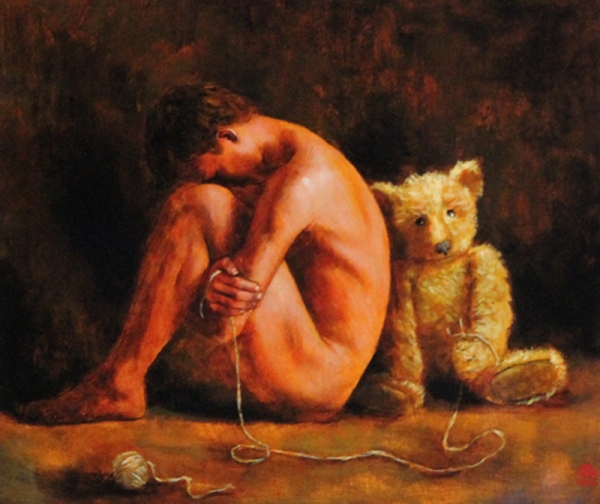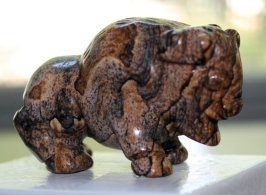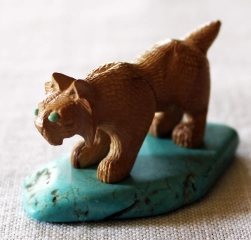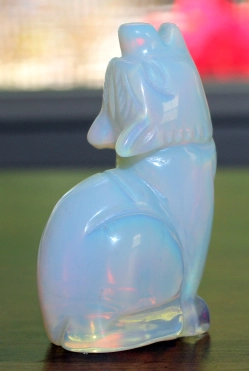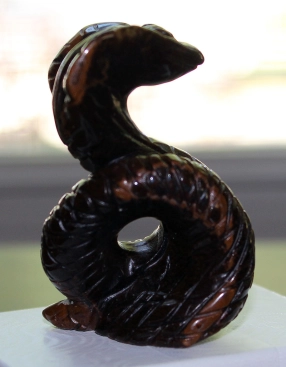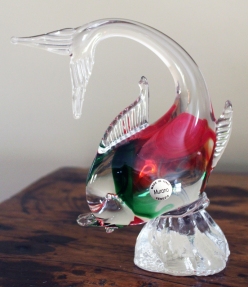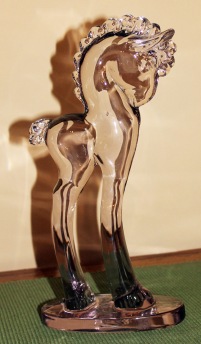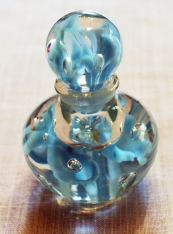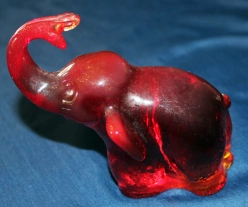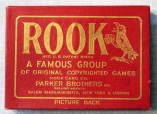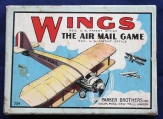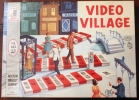As mentioned in the first two installments of this “Boomer Nostalgia” series, this past New Year’s Eve, the neighbors on the block where my partner Dan and I live gathered for our annual year-end celebration. Between appetizers, main courses, and beverages, several of us who are of the Baby Boomer generation got into a conversation about the impact of television on our lives as children and teenagers, and, as would result, many of us became nostalgic about the characters and stories that informed our youth. We discussed a variety of programs we had so dearly loved, and, among the diverse themes, we chatted about television cartoon shows (from Yogi Bear to The Flintstones, from Rocky and Bullwinkle to Underdog), classic westerns (from Rawhide to Wanted Dead or Alive, from Gunsmoke to Bonanza), and, interestingly enough, science-fiction programs (from The Twilight Zone to The Outer Limits, from Voyage to the Bottom of the Sea and Star Trek). Needless to say, we covered a lot of televised territory.
Because there is such a diversity of vintage card and board games that Dan and I collect and sell, and not wanting to compose a blog that goes for 20-plus pages. I have decided to discuss each of the three categories previously mentioned: TV cartoons (see Part 1), classic TV western (see Part 2), and science fiction (the last blog of this series) as these are the most requested from my buyers.
So, on to science-fiction TV classic board and card games! Here are three of my all-time personal favorites.
The Outer Limits
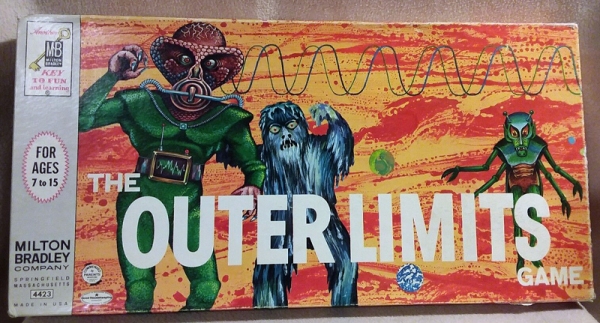
When I was about two years old, my maternal grandmother left her homeland in southern France to come and stay with us in the United States. My mom was her only child, and since her husband had died during World War II, Nana (as we lovingly called her) opted to come live with her daughter and American family. Nana’s father had been an oceanographer, having worked with renowned Jacques Cousteau’s father. Having been exposed to diverse sciences all her life, Nana valued what science could teach us about life here on Earth, and even beyond.
So, when my dad acquired our first black-and-white television and if our parents were at work during the evenings, Nana along with Edna (my tribal paternal grandmother) were the adults who selected what TV shows my brothers and I could watch. From Part 1, Edna had deemed that the Rocky and Bullwinkle cartoon show acceptable, as it dealt with the sacred creatures of a moose and squirrel. Nana, on the other hand, selected The Outer Limits as an excellent program to watch not only because the show presented different concepts of science and the possibilities they brought to human awareness but also because each episode was in and of itself a small morality play. Looking back more than 50 years later, I realize how wise she was to allow us kids by her side to view The Outer Limits.
How the combination of watching Rocky and Bullwinkle and The Outer Limits on TV affected my childhood psyche as well as my adult personality is subject for another blog.
Based on the television series The Outer Limits, this very rare board game was produced and released in 1964 by the Milton Bradley Company of Springfield, Massachusetts. The Outer Limits was broadcast on ABC from 1963 to 1965. The series is often compared to The Twilight Zone, but with a greater emphasis on science-fiction stories (rather than tales just dealing with fantasy or supernatural matters). The Outer Limits was an anthology of self-contained episodes, often with a plot twist at the end that delivered a profound moral insight. The only recurring “character,” if you will, was the Control Voice whose narration mainly ran over images of an oscilloscope and announced the now-legendary message “There is nothing wrong with your television set. Do not attempt to adjust the picture.”
Though canceled after three years of production, the series was revived in 1995, airing on Showtime from 1995 to 2000, then on the Sci-Fi Channel from 2001 until its cancellation in 2002. In 1997, the episode “The Zanti Misfits” was ranked #98 on TV Guide’s 100 Greatest Episodes of All Time.
And the picture on our television screen remains unadjusted.
The Time Tunnel
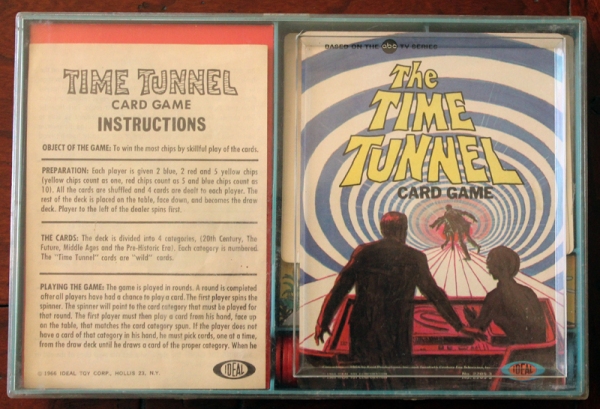
When our family moved from the pristine countryside of the Upper Peninsula of Michigan to the Dantesque industrial city of Whiting, Indiana (a suburb of Chicago, where my dad found work), we rented a home on Davis Avenue. It was a quirky domicile that had a driveway and garage that led to the basement of the house, and a creaky, oddly lit stairwell from the main level of the house into a foreboding attic. The stairwell was covered with a two-door panel that would rattle constantly and banged loudly whenever it stormed. Michael (my brother closest to me in age) and I believed that this stairwell to the attic was an opening to another world. We became convinced in 1966 that this was the case when we watched the first episode of The Time Tunnel,and, to the annoyance of the adults in our household, we had many childhood adventures in that stairwell and attic to different times and places.
Based on the television series The Time Tunnel, this extremely rare game version — two board game products were manufactured as well as this card game — was developed and released in 1966 by Ideal Toy Corporation. The Time Tunnel was a mid-1960s science-fiction TV series, written around the theme of traveling through time, both past and future. The show starred James Darren, Robert Colbert and Lee Meriwether. The Time Tunnel was created and produced by Irwin Allen, and it was his third of four science-fiction television series — the others being Lost in Space, Voyage to the Bottom of the Sea, and Land of the Giants. The show was released by 20th Century Fox and was broadcast on ABC. It aired for only one season of 30 episodes, yet it remains one of the most popular science-fiction shows of its decade.
To this day, Mike and I often speak of our crazy attic adventures trying to find Doug, Tony and Ann, forever lost in time.
Voyage to the Bottom of the Sea

With a great grandfather who had been a well-known oceanographer, Voyage to the Bottom of the Sea was simply a natural TV attraction that my brothers and I relished.
Voyage to the Bottom of the Sea is a 1960s American science-fiction television series based on the 1961 film of the same name. Both were created by Irwin Allen, which enabled the movie’s sets, costumes, props, special-effects models, and sometimes footage, to be used in the production of the television series. Voyage to the Bottom of the Sea was the first of Irwin Allen’s four science-fiction television series, as well as the longest-running. The show’s main theme was underwater adventure.
The series was broadcast on ABC from September 14, 1964, to March 31, 1968, and was the decade’s longest-running American science-fiction television series with continuing characters. The 110 episodes produced included 32 shot in black and white (1964–1965), and 78 filmed in color (1965–1968). The first two seasons took place in the then-future of the 1970s. The final two seasons took place in the 1980s. The show starred Richard Basehart and David Hedison.
Produced and released by Milton Bradley in 1964, the vintage Voyage to the Bottom of the Sea board game aims to provide the adventurous thrills of the crew of the submarine “Seaview” as experienced in the 1961 film as well as the 1964-1968 TV show of the same name, which were both directed by Irwin Allen. The object of this two-player game is not to lose all of one’s submarines.
So, “Dive, dive, dive!” as the captain would say.
There are many more examples that could be provided of wonderful family entertainment games based on 1950s and 1960s televised western shows, these three are just some of them. But, if you’re interested in collecting vintage card and board games based on Boomer generation shows, come visit us at Dogbotz Boneyard.
All the best,
Patrick Price,
Proprietor,
Dogbotz Boneyard, LLC
www.dogbotz.com
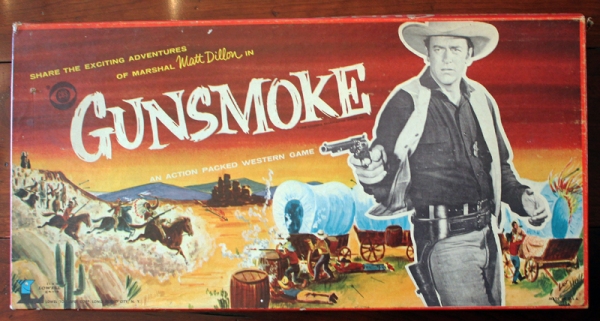 For me, as well as for many of my siblings, Gunsmoke remains one of the most enduring and endearing TV western shows ever produced. In the corresponding board game, players share the exciting adventures of Marshall Matt Dillon of the Gunsmoke television show. This action-packed western game was manufactured by Lowell Toy Manufacturing Corporation in 1958, after the release of the TV show itself, which was the longest-running show in television history — 20 years.
For me, as well as for many of my siblings, Gunsmoke remains one of the most enduring and endearing TV western shows ever produced. In the corresponding board game, players share the exciting adventures of Marshall Matt Dillon of the Gunsmoke television show. This action-packed western game was manufactured by Lowell Toy Manufacturing Corporation in 1958, after the release of the TV show itself, which was the longest-running show in television history — 20 years. Maybe it was the proverbial “bad boy” in me when I was a child, but I always found televised western shows that depicted the exploits of outlaws to be oddly alluring. Needless to say, my parents and grandparents always kept a watchful eye that things didn’t get to violent on these shows. Jesse James, his brother and fellow outlaws were some of my favorite TV western characters.
Maybe it was the proverbial “bad boy” in me when I was a child, but I always found televised western shows that depicted the exploits of outlaws to be oddly alluring. Needless to say, my parents and grandparents always kept a watchful eye that things didn’t get to violent on these shows. Jesse James, his brother and fellow outlaws were some of my favorite TV western characters. If Jesse James and his gang of outlaws weren’t enough, there was always The Restless Gun, a favorite western show of one of my older brothers.
If Jesse James and his gang of outlaws weren’t enough, there was always The Restless Gun, a favorite western show of one of my older brothers.








